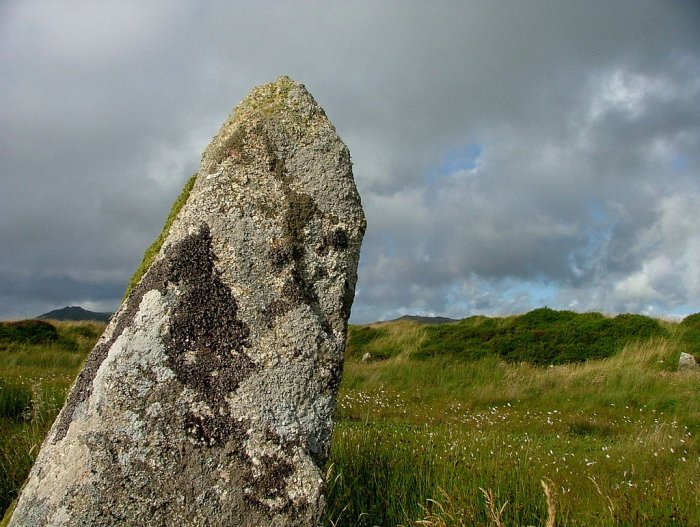Jan Bartek – AncientPages.com – King Arthur’s Hall, a megalithic enclosure located on Bodmin Moor in Cornwall, England, has recently been re-evaluated to be significantly older than previously believed.
A new survey conducted by researchers from the University of St Andrews and other institutions has revealed that this historic site dates back to prehistoric times, specifically the Neolithic period, making it approximately 5,500 years old—4,000 years earlier than its previous medieval dating.
Credit: Historic England
The research team included Dr. Tim Kinnaird from the School of Earth and Environmental Sciences at St Andrews. They utilized optically stimulated luminescence (OSL) to determine when the sediment was last exposed to light before burial. This technique confirmed that King Arthur’s Hall is indeed much older than initially thought.
The site features a rectangular bank of earth and stone with 56 standing stones that vary in position—some are leaning or recumbent while others are partially buried. Although Historic England had listed it as an early medieval animal pen from around 1000 AD due to its integrated standing stones, there was speculation about its true age.
Dr. Kinnaird described these findings as a “major revelation,” highlighting the importance of this discovery in understanding the historical significance of King Arthur’s Hall and its place within prehistoric archaeology.
“It’s extremely exciting that we’ve finally been able to date construction of this enigmatic monument, previously grounded in myths and legends, “Dr. Kinnaird said in a press release.
Cornwall National Landscape’s “A Monumental Improvement” project commissioned the Cornwall Archaeological Unit to investigate the site’s archaeology, define its chronology, understand its use and landscape context, and assess long-term conservation needs.
King Arthur’s Hall on Bodmin Moor. Credit: Theroadislong – Public Domain
Dr. Kinnaird said, “The first insight into the construction of the monument came much earlier though. Myself and my colleague Professor Sam Turner from Newcastle University visited the excavations undertaken by the Cornwall Archaeological Unit.
“We were able to demonstrate that the buried soil beneath the bank was disturbed at construction—resetting the luminescence signals, and providing the opportunity to date the monument.
“Given that the monument is now 4,000 years older than first thought, we now need to consider the monument within the context of Bodmin Moor’s prehistoric landscape, and the other structures on the moor that might have been significant at the time.
See also: More Archaeology News
“This all alludes to a rich Neolithic landscape, evidencing an active community on the Moor, which requires further investigation.”
Written by Jan Bartek – AncientPages.com Staff Writer



